
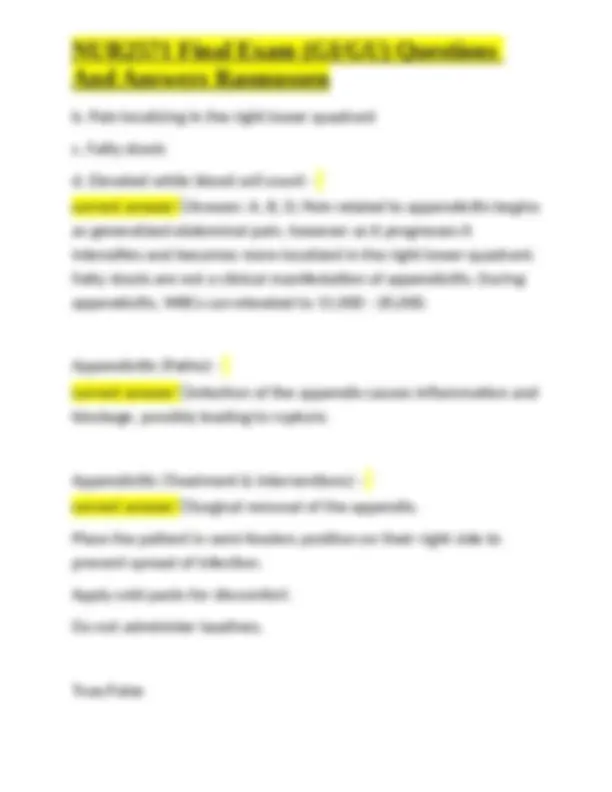
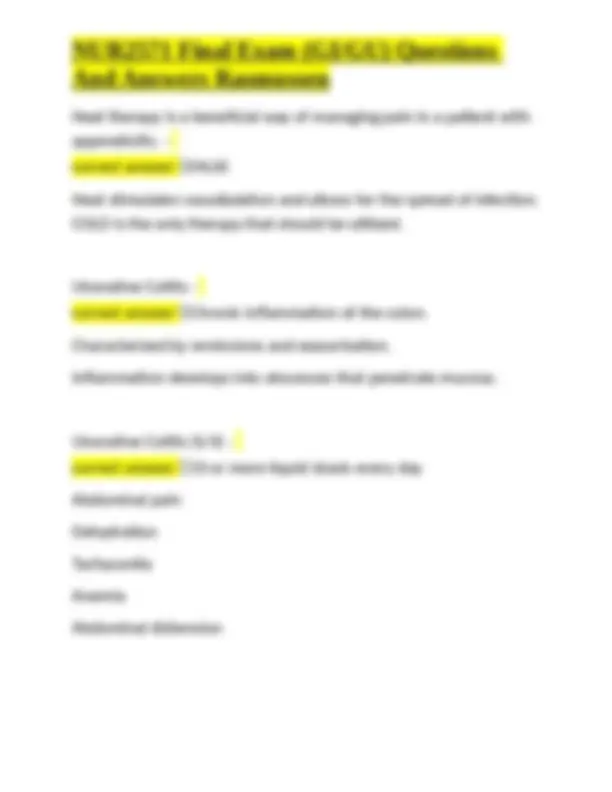
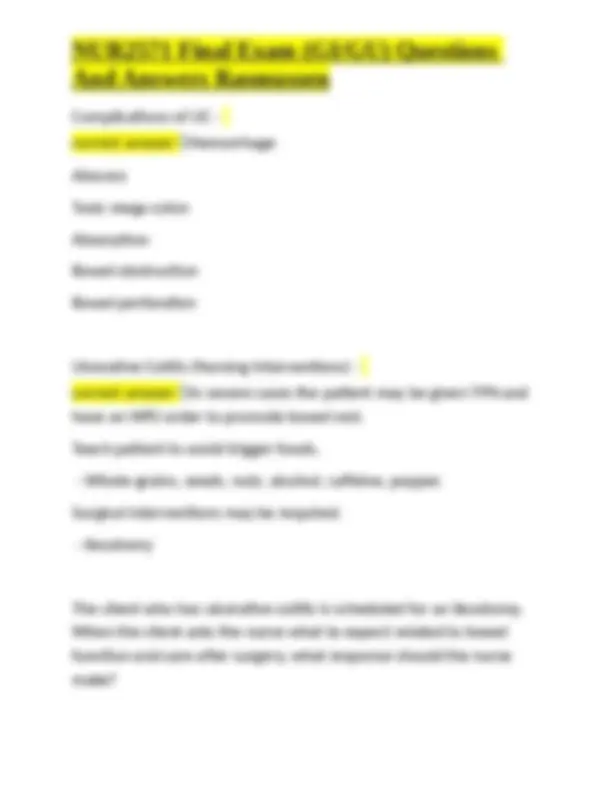
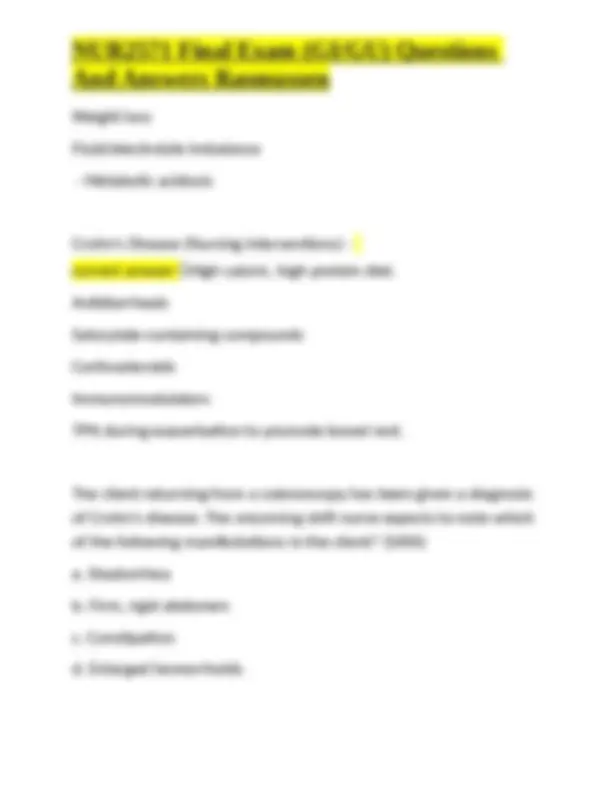
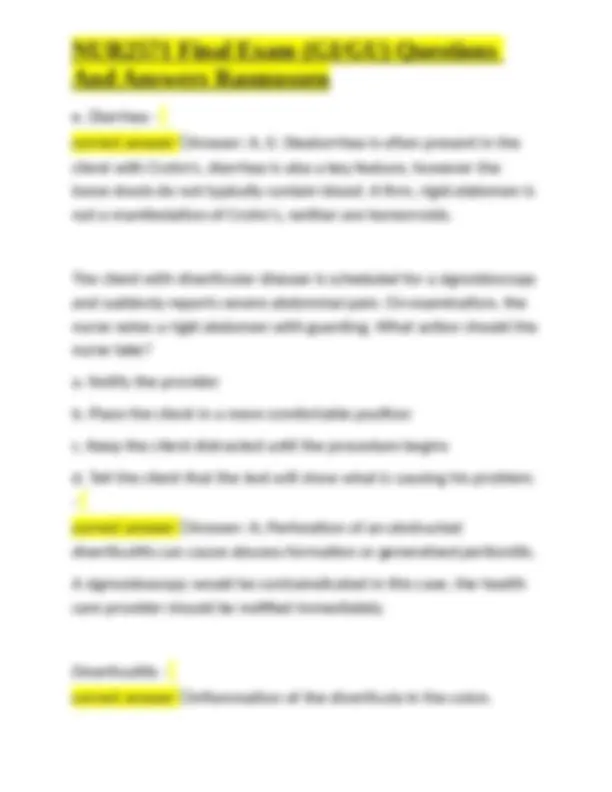
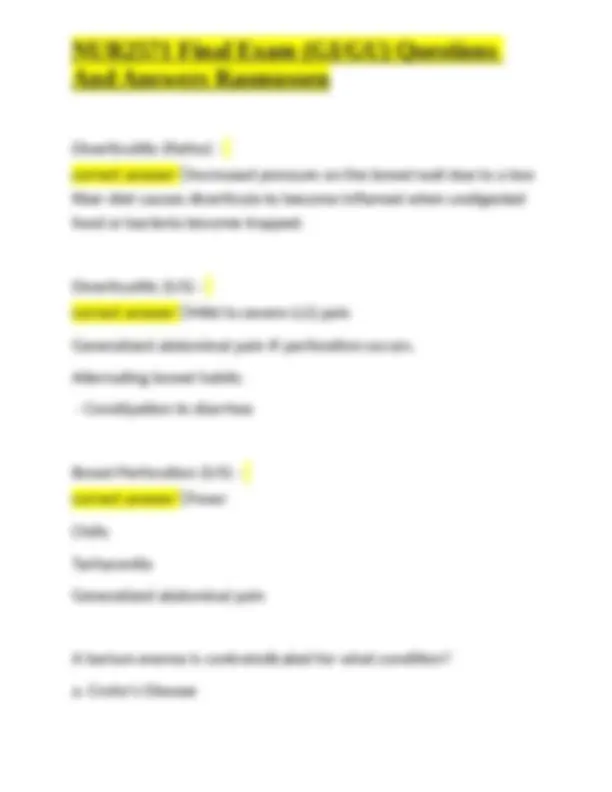
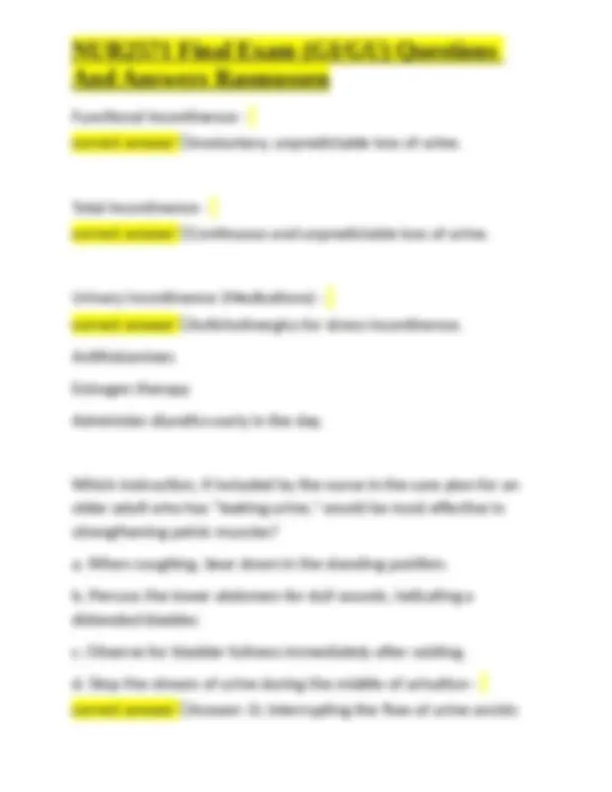
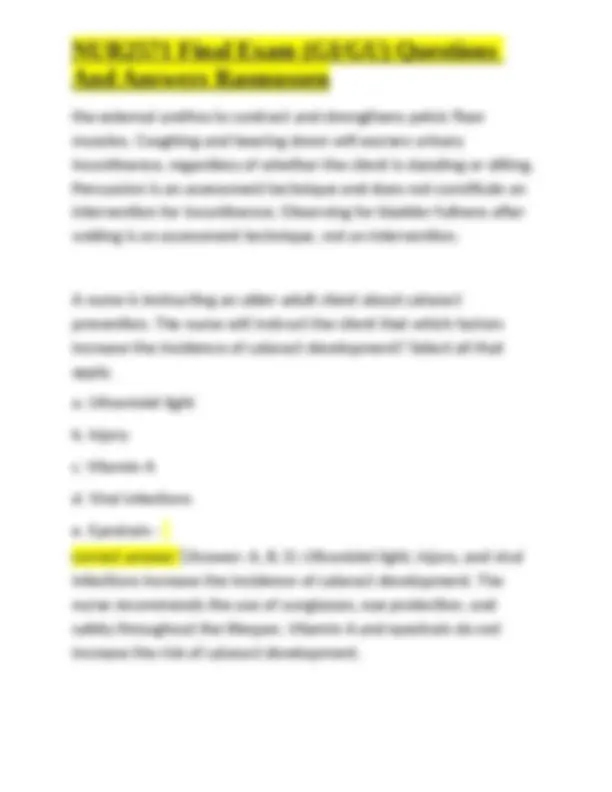
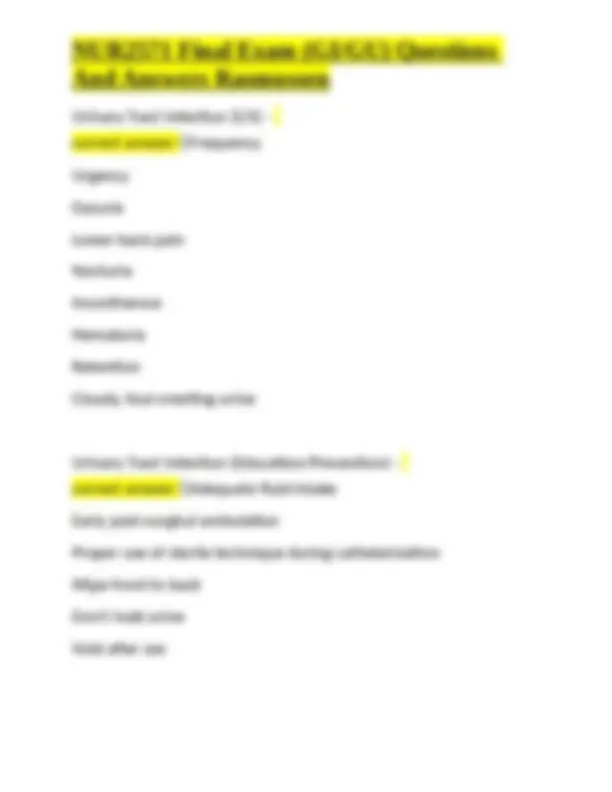


Study with the several resources on Docsity

Earn points by helping other students or get them with a premium plan


Prepare for your exams
Study with the several resources on Docsity

Earn points to download
Earn points by helping other students or get them with a premium plan
Community
Ask the community for help and clear up your study doubts
Discover the best universities in your country according to Docsity users
Free resources
Download our free guides on studying techniques, anxiety management strategies, and thesis advice from Docsity tutors
NUR2571 Final Exam (GI/GU) Questions And Answers Rasmussen
Typology: Exams
1 / 16

This page cannot be seen from the preview
Don't miss anything!










Dysphagia (Assessment) - correct answer ✅Difficulty swallowing liquids or solids. Recurrent pulmonary infections. (Related to aspiration) Coughing after eating or drinking. Dysphagia (Diagnostics) - correct answer ✅Barium swallow test or an endoscopic evaluation. Swallow studies are preformed by occupational therapy, NOT the nurse. The nurse can do a swallow screening and request a consult with OT for further evaluation. Dysphagia (Nursing Interventions) - correct answer ✅Provide the patient with thickened fluids and foods.
Appendicitis (S/S) - correct answer ✅Generalized abdominal pain that progressively worsens. Nausea and vomiting Localized RLQ pain (McBurney's Point)** Rebound tenderness. A patient admitted with appendicitis is scheduled for an appendectomy tomorrow. As the nurse you are evaluating the patients pain, the patient states their pain suddenly went away. What does this indicate? - correct answer ✅Sudden relief of pain indicates that the appendix has ruptured. This is a medical emergency that will require the patient to go in for emergency surgery. A ruptured appendix places the patient at a high risk for developing septicemia. The nurse is admitting a child with a diagnosis of "Rule out appendicitis" The nurse assesses this client for which manifestations? (SATA) a. Generalized abdominal pain
Heat therapy is a beneficial way of managing pain in a patient with appendicitis. - correct answer ✅FALSE Heat stimulates vasodialation and allows for the spread of infection. COLD is the only therapy that should be utilized. Ulcerative Colitis - correct answer ✅Chronic inflammation of the colon. Characterized by remissions and exacerbation. Inflammation develops into abscesses that penetrate mucosa. Ulcerative Colitis (S/S) - correct answer ✅10 or more liquid stools every day Abdominal pain Dehydration Tachycardia Anemia Abdominal distension
Complications of UC - correct answer ✅Hemorrhage Abscess Toxic mega colon Absorption Bowel obstruction Bowel perforation Ulcerative Colitis (Nursing Interventions) - correct answer ✅In severe cases the patient may be given TPN and have an NPO order to promote bowel rest. Teach patient to avoid trigger foods.
Medications for UC - correct answer ✅glucorticoids (Prednisone)
Weight loss Fluid/electrolyte imbalance
Diverticulitis (Patho) - correct answer ✅Increased pressure on the bowel wall due to a low fiber diet causes diverticula to become inflamed when undigested food or bacteria become trapped. Diverticulitis (S/S) - correct answer ✅Mild to severe LLQ pain Generalized abdominal pain IF perforation occurs. Alternating bowel habits.
b. Diverticulitis c. Colon Cancer d. Constipation - correct answer ✅Answer: B; A barium enema can be used to detect colon cancer and will not have an adverse affect on a patient who is constipated. Barium enema's are used to find diverticuli, but when these are in a state of inflammation the test is contraindicated. Diverticulitis (Management/Treatment) - correct answer ✅Colon resection in 25% of cases. Antibiotics Analgesics Stool softeners Dietary modifications
Functional Incontinence - correct answer ✅Involuntary, unpredictable loss of urine. Total Incontinence - correct answer ✅Continuous and unpredictable loss of urine. Urinary Incontinence (Medications) - correct answer ✅Anticholinergics for stress incontinence. Antihistamines Estrogen therapy Administer diuretics early in the day. Which instruction, if included by the nurse in the care plan for an older adult who has "leaking urine," would be most effective in strengthening pelvic muscles? a. When coughing, bear down in the standing position. b. Percuss the lower abdomen for dull sounds, indicating a distended bladder. c. Observe for bladder fullness immediately after voiding. d. Stop the stream of urine during the middle of urination - correct answer ✅Answer: D; Interrupting the flow of urine assists
the external urethra to contract and strengthens pelvic floor muscles. Coughing and bearing down will worsen urinary incontinence, regardless of whether the client is standing or sitting. Percussion is an assessment technique and does not constitute an intervention for incontinence. Observing for bladder fullness after voiding is an assessment technique, not an intervention. A nurse is instructing an older adult client about cataract prevention. The nurse will instruct the client that which factors increase the incidence of cataract development? Select all that apply. a. Ultraviolet light b. Injury c. Vitamin A d. Viral infections e. Eyestrain - correct answer ✅Answer: A, B, D; Ultraviolet light, injury, and viral infections increase the incidence of cataract development. The nurse recommends the use of sunglasses, eye protection, and safety throughout the lifespan. Vitamin A and eyestrain do not increase the risk of cataract development.
Urinary Tract Infection (Treatment) - correct answer ✅Increase fluid intake to 3L/day Antibiotics specific to organism Antispasmosdics for bladder spasms Phenazopyridine (Azo) for symptom treatment.